Estuaries are highly productive ecosystems that form where rivers enter the sea: in Wales, this is often signified by the Welsh place name having the pre-fix ‘Aber’ and followed by the name of the river, e.g. Aberystwyth, Aberdyfi etc. The larger, fully developed, saltmarsh systems, e.g. the Severn Estuary, the Dee Estuary and the Burry Inlet can host a wide range of saltmarsh habitats, including the ‘Atlantic salt meadows’ and ‘Salicornia and other annuals’ Annex I habitats on the EC Habitats Directive. These and the other major saltmarsh habitats are described in the sections below.
Estuaries
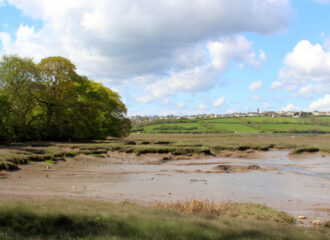
Intertidal mudflats and sandflats
Intertidal mudflat and sandflats are a major components of estuarine ecosystems, with large areas supporting high densities of bivalve molluscs such as cockles (Cerastoderma edule), peppery furrow shells (Scrobicularia plana) and mud snails (Hydrobia ulvae), all of which contribute to the provision of important feeding grounds for large numbers of wading birds. The most important…
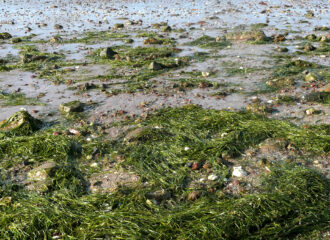
Eelgrass beds
Eelgrass beds can occur both in the littoral and sublittoral zones of an estuary. Dwarf eelgrass (Zostera noltii) is found highest on the shore, narrow-leaved eelgrass (Zostera angustifolia) occurs on the mid to lower shore, and eelgrass (Zostera marina) predominantly in the sublittoral. These plants are an important source of food for wildfowl, particularly for…
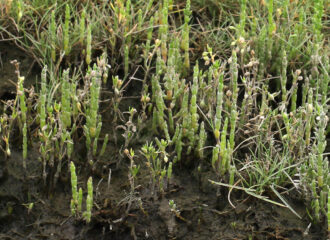
Glasswort (Salicornia) zones
Glasswort species (Salicornia spp) colonise intertidal mud and sandflats to form a pioneer saltmarsh habitat that facilitates the development of more stable habitat components. The main Salicornia zone develops in the lower saltmarsh and is frequently inundated by the tide, though the species can also colonise the sides of creeks sides and disturbed areas and…
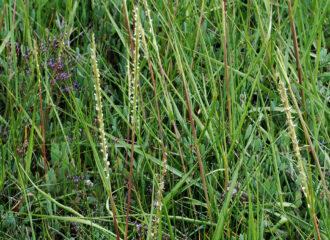
Spartina stands
Stands of common cord grass (Spartina anglica) can be found on estuaries in Wales but have a“non-significant presence”, i.e., the stands tend to be small and comprise the non-native common cord grass (Spartina anglica). Spartina anglica is a vigorous species, which arose in England at the end of the 19th century by the natural hybridization of S.…
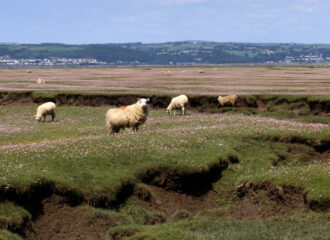
Atlantic salt meadows
Atlantic salt meadows are found in the middle and upper reaches of estuarine saltmarshes where, although covered by the sea during the medium and higher tides, inundation occurs with less frequency and duration. These salt meadows can be extensive, especially where the landward side hasn’t been enclosed. The vegetation varies according to climate, the frequency…
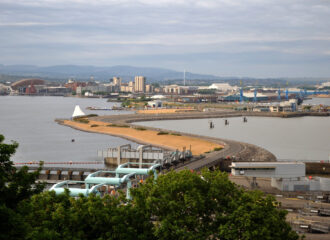
Modified state 1 – Barrages and marinas
The development of barrages and marinas is a major threat to any sizeable estuary in Wales. Marinas can be found in many locations and there is both a marina and a barrage in Cardiff Bay that flooded the estuarine habitats and wader and wildfowl feeding grounds where the Taff and Ely rivers enter the Bristol…

